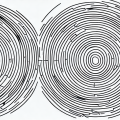Finding the quadratic equation from points can be a very helpful skill for students, mathematicians, and anyone who works with equations. Quadratic equations are an important part of algebra, and being able to find the equation from points can help you perform more accurate calculations, more quickly. In this article, we will explore the steps necessary for finding the quadratic equation from points.
Identifying the Quadratic Equation
A quadratic equation is an equation with a variable raised to the second power. It looks like this: ax² + bx + c = 0, where a, b, and c are constants. You can use this equation to find the roots of a quadratic equation by setting the equation equal to zero and then solving for x. This is what you are trying to achieve when you are trying to find the quadratic equation from points.
What Are Points and How Do They Relate to the Quadratic Equation?
A point is a coordinate on a Cartesian plane. It consists of two numbers, an x-value and a y-value, each of which is a number. When graphed, these points will form a line or curve on the plane. For example, if you have two points, (1,5) and (5,13), these can be graphed to form a line. Points are related to quadratic equations because they can be used to represent the curve described by the equation.
Visualizing the Quadratic Equation
In order to better understand how points can be used to find the quadratic equation from them, it is important to visualize the equation. The most common way of doing this is to use a graphing calculator or softwareprogram, such as Microsoft Excel or Wolfram Alpha, to graph the equation. Doing so will show you how each point relates to the overall graph. This will help you understand what shapes and characteristics the curve exhibits, as well as how the points themselves fit into the equation.
Finding the Coefficients of the Quadratic Equation
Once you have visualized the equation, it is time to find the coefficients of the equation. The coefficients, a, b, and c, are constants that determine the shape and characteristics of the curve. To find them, you will need to have three or more points that can be used to identify an equation describing the curve generated by those points. The three points should be distinct and not colinear (on the same line). By providing these three points, you can then plug them into a formula to find the coefficients of the quadratic equation.
Using the Intercept Method to Find the Quadratic Equation
The Intercept Method involves using two points to identify the intercepts of the quadratic equation (the x-intercepts and y-intercepts). This method is especially useful when you do not have three points available to generate an equation for the curve. To use this method, you must identify the two points that form the intercepts and then plug them into a formula to generate a quadratic equation with two coefficients.
Using the Vertex Method to Find the Quadratic Equation
The Vertex Method is used when you have three or more points available to generate an equation for a quadratic curve. This method involves finding the vertex of the curve formed by the points and then using it to find the coefficients of the quadratic equation. To do this, you must identify the vertex by finding the highest or lowest point on the curve and then use it in a formula to generate an equation with three coefficients.
Differentiating Between Standard and General Form of the Quadratic Equation
When finding a quadratic equation from points, it is important to note that there are two different forms of equations that can be generated; a standard form and a general form. The standard form looks like ax² + bx + c = 0. It is usually simpler to work with than its general form, which looks like ax² + bx + c = d. Knowing which form you need is important in determining how you will generate your quadratic equation.
Checking Accuracy of Your Results
Once you have calculated your coefficients, it’s important to double-check your results. To do this, you should graph your equation and see if it matches the shape of your original graph. Additionally, you can use your coefficients to plug in a couple of new points and see if they yield results consistent with your newly calculated equation.
Practical Applications for Finding the Quadratic Equation From Points
Finding a quadratic equation from points can be useful in many different contexts. For example, it can help mathematicians identify patterns when graphing data; scientists utilize it when modeling certain physical phenomena; economists use it to calculate supply and demand curves; and engineers use it when designing objects that need to be symmetrical or linearly increasing/decreasing. Knowing how to find a quadratic equation from points can come in handy in many different fields.





